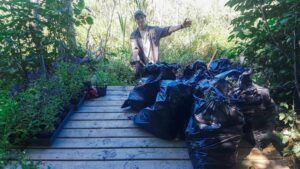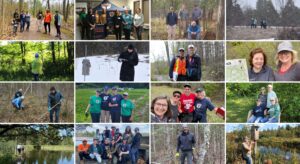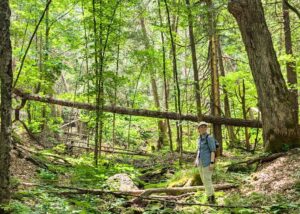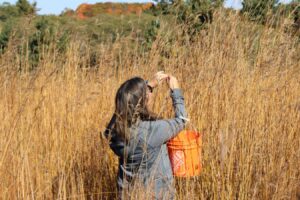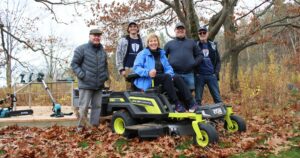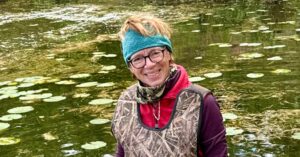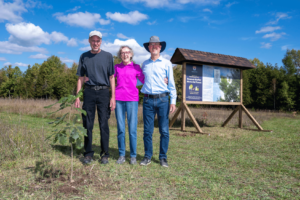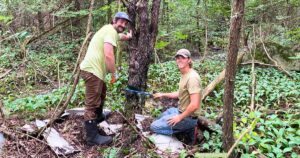Hayden Wilson, Land Stewardship Coordinator
Kawartha Land Trust (KLT) actively manages six invasive plant species and monitors for one invasive insect species across our protected properties.
Each species poses a different challenge for KLT’s stewardship team depending on the species’ pervasiveness across the landscape, its lifecycle, and the rate of spread and threats it poses to local ecosystems.
At KLT, we build integrated pest management strategies that we pair with best management practices to help tackle invasive species on our properties and create more robust and resilient ecosystems in the Kawarthas.
Learn about some of the invasive species that KLT works to remove from its protected lands:
Dog-strangling vine
Dog-strangling Vine is an invasive species that grows in thick stands and chokes out other plants — even trees. It also makes travelling through the woods difficult for large animals. KLT manages Dog-strangling Vine at Ballyduff Trails in order to maintain the tallgrass prairie and forest understory and at Christie Bentham Wetland.
European Buckthorn
European Buckthorn is a prickly tree that tends to dominate the understory and open fields. KLT manages this tree at several of its properties to keep open fields and hedgerows from becoming overgrown.
Garlic Mustard
Garlic Mustard is a surprisingly tasty invasive species that was originally brought to Canada as a crop. It grows in dense clusters in forests, forming a thick mat of roots and keeping other native plants from pushing through. KLT manages Garlic Mustard at Ingleton-Wells and John Earle Chase Memorial Park.
Scots Pine
Scots Pine is a fast-growing species of pine that was originally brought to Canada for timber production, but due to poor seed genetics most stands grow abnormally and are not useful for timber production. KLT manages Scots Pine at Ballyduff Trails and Cation Wildlife Preserve to help restore native forests and maintain open meadows.
Invasive Phragmites
Invasive Phragmites are one of the most aggressive and fastest-spreading invasive species in Ontario. This wetland plant grows thick root systems that prevent any other species from growing and shades out anything that tries — even shrubs. KLT manages invasive Phragmites at our van Nostrand, Balsam Lake, and Emily Creek properties to keep the wetlands from being dominated by this aggressive species.
Purple Loosestrife
Purple Loosestrife is a former worst-case scenario invasive species that has declined thanks to the success of the introduction of the loosestrife beetle, which eats this species. KLT manages Purple Loosestrife at John Earle Chase Memorial Park to maintain the diversity of the wetland.
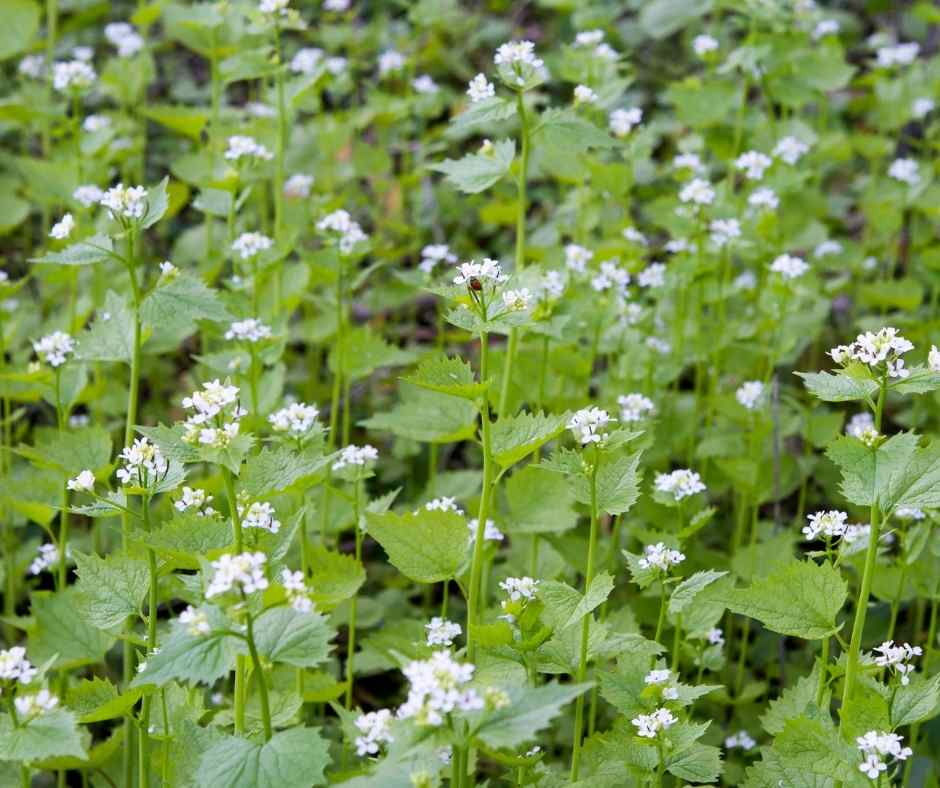
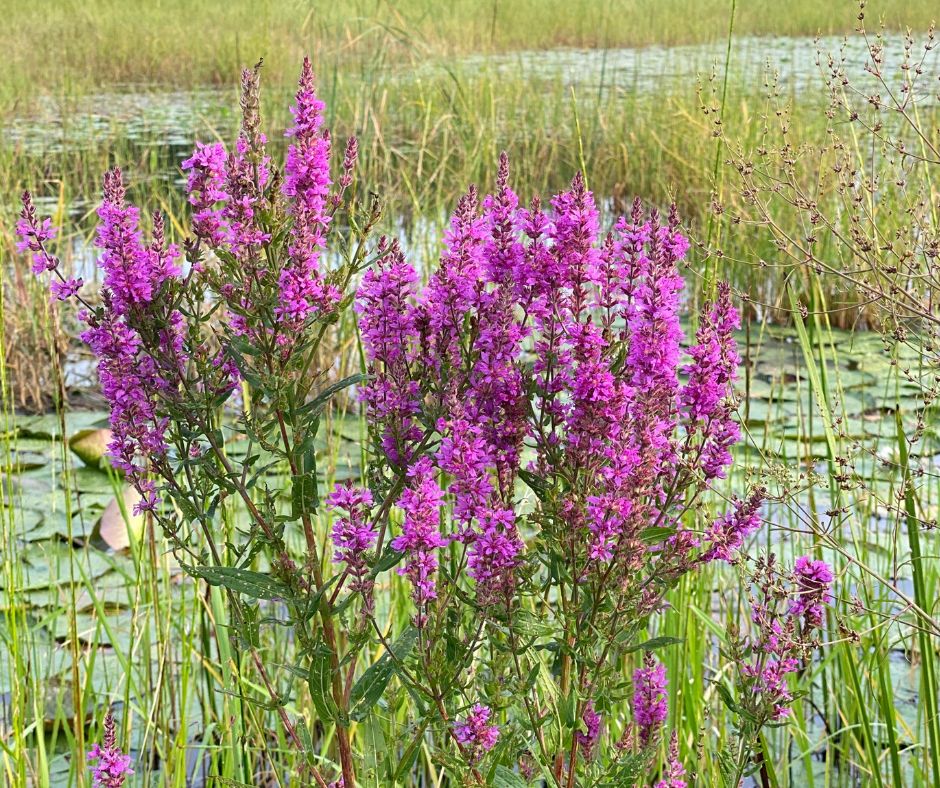

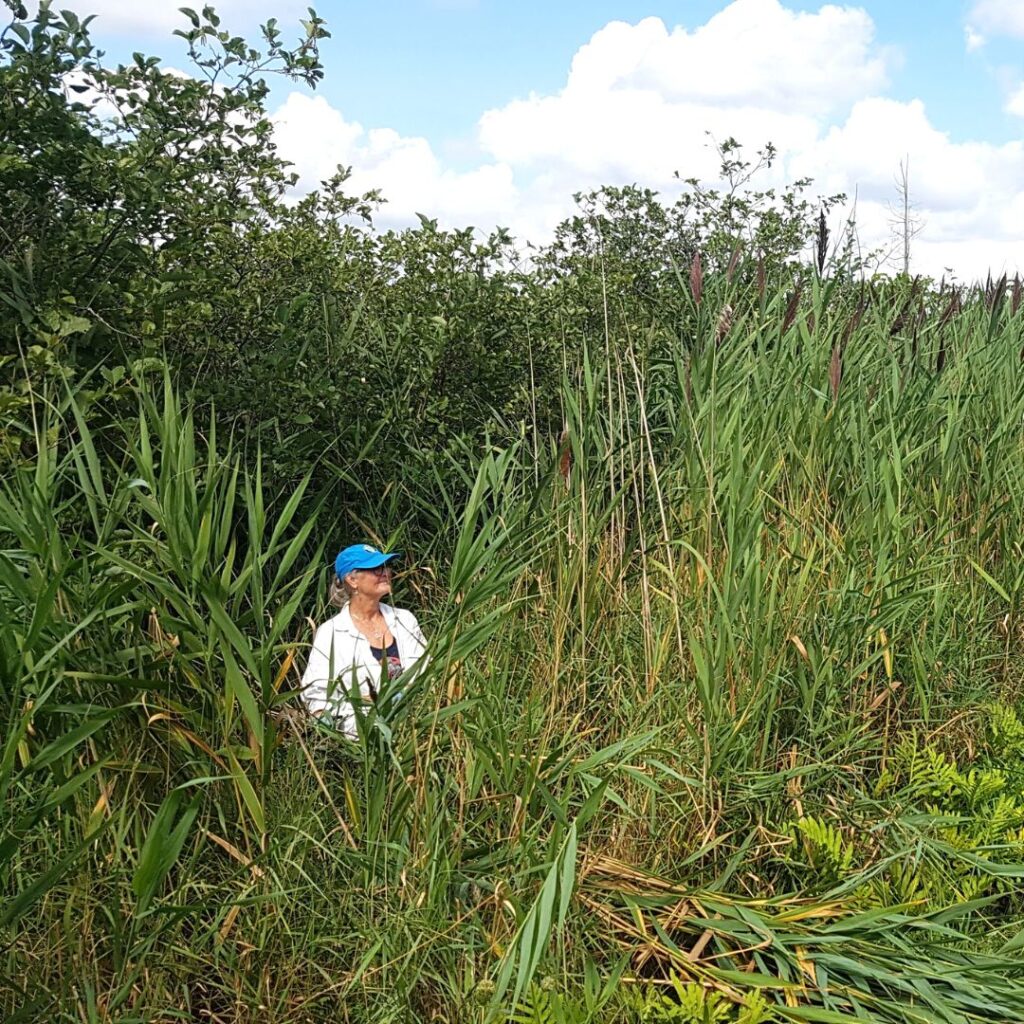
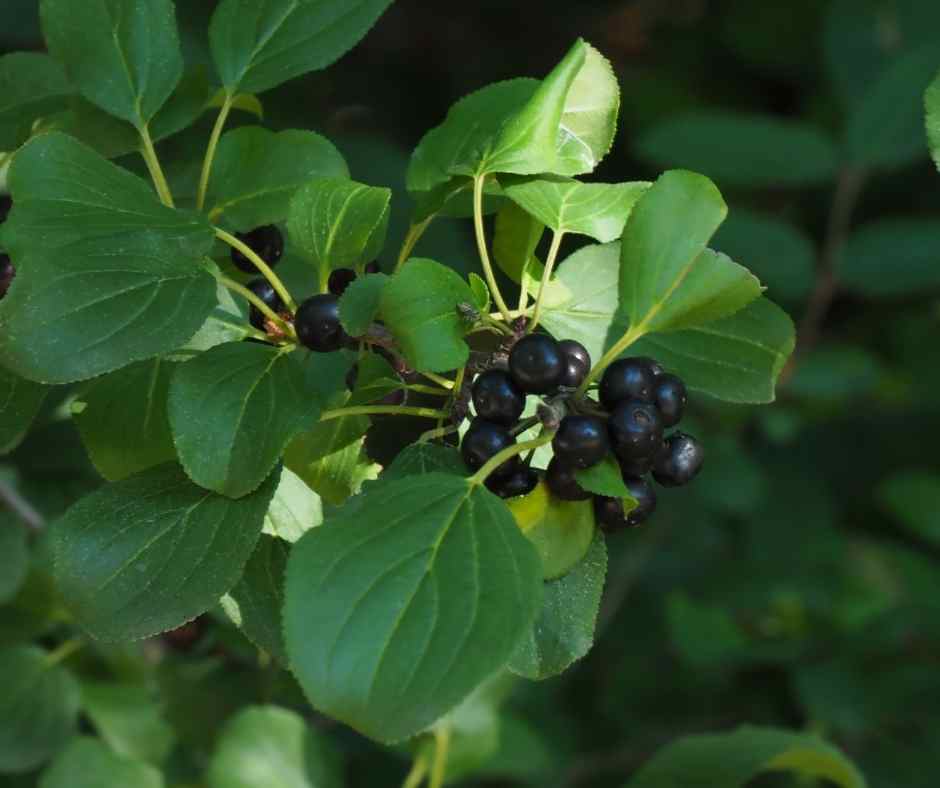
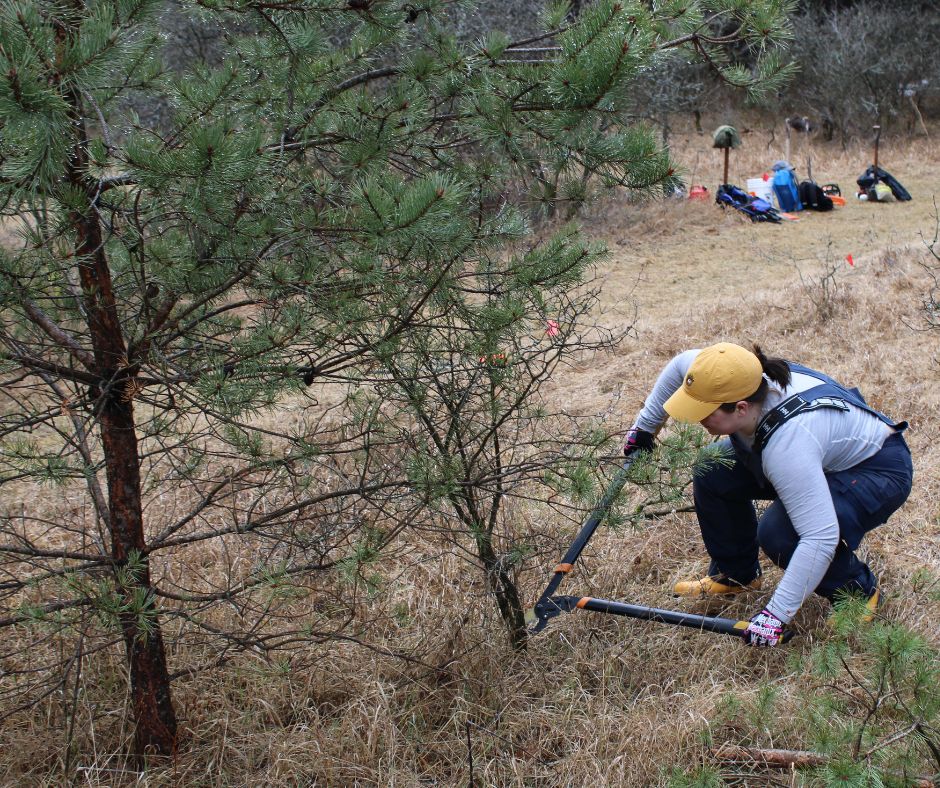
Article by Land Stewardship Coordinator, Hayden Wilson. Posted May 20, 2022. Main photo: Hayden Wilson standing beside bags of pulled Purple Loosestrife at John Earle Chase Memorial Park in Trent Lakes in 2021. (Hailey Smith)

